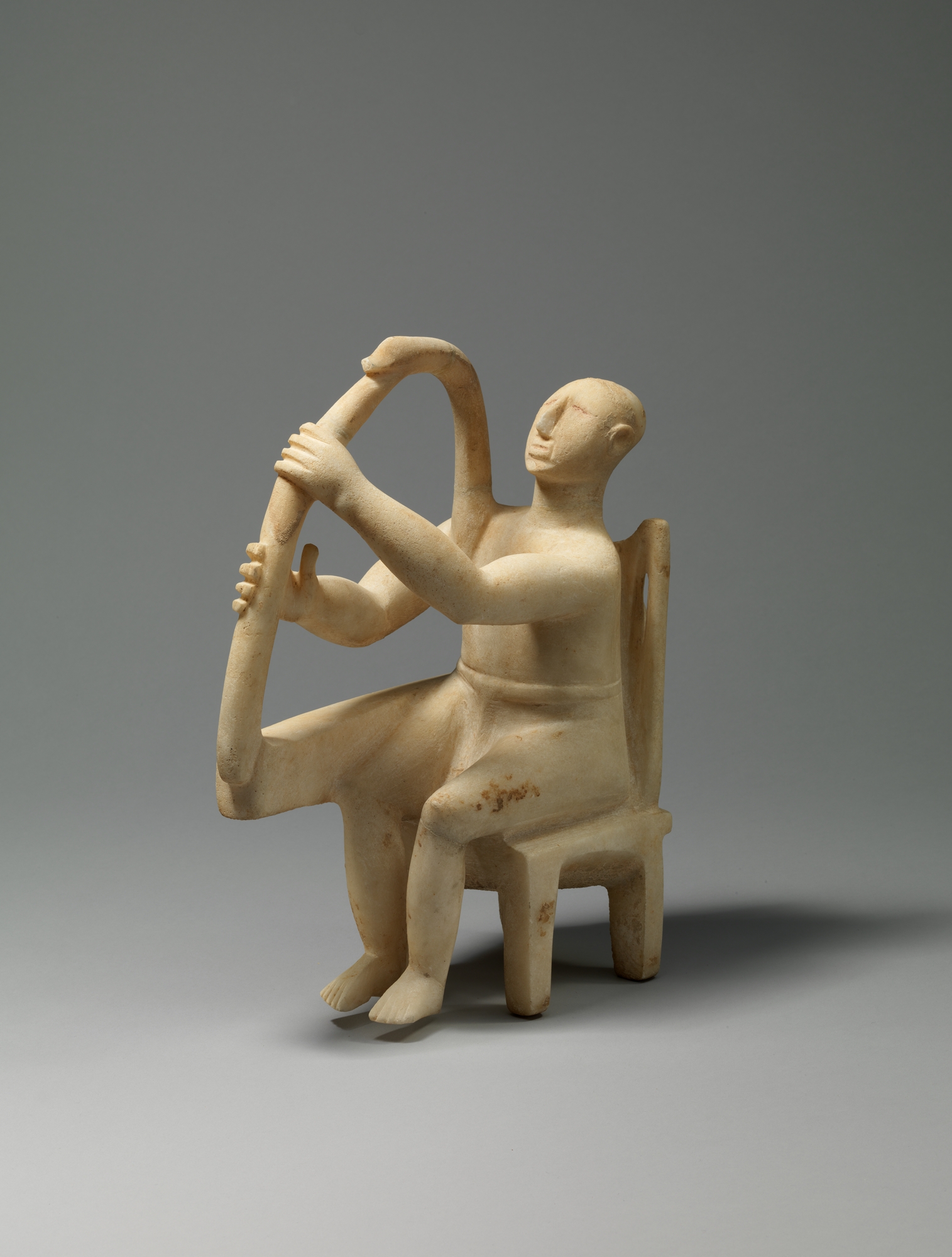This little marble figure of a seated harp player was found on the Cyclades – a group of Greek islands in the Aegean Sea. Many similar statues have been uncovered in gravesites throughout the area. In addition to little musicians like this one, many of the statuettes depict standing human figures, often with minimal modeling of the body. Others are simplified heads with no facial features except for noses. They may have originally been painted, since traces of paint remain on some examples.
Unfortunately, there’s no indication of what these figures meant to the Bronze Age culture that made them. The fact that they have mostly, but not always, been found in graves suggests they had some ritual purpose. Beyond that, there simply isn’t evidence to go on. The minimalist style of these figurines made them very popular during the first half of the twentieth century. Everybody wanted one, so illicit excavation and even forgery of these objects became common. Therefore, the archaeological information that would assist in understanding their meaning is often missing. It’s clear, though, that music was important to the people of the Cyclades, since harp and flute players are featured in many of the statues.
- Alexandra Kiely


 Unknown Artist
Unknown Artist